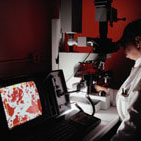
The increase of healthcare turnkey projects in Asia Pacific has accelerated the growth of the Medical Imaging market within the region. Frost & Sullivan reported that the market is positive and expects a double-digit expansion of 12.7% CAGR by 2012; more than twice the rate in comparison with the rest of the world.
Reenita Das, Senior Vice President, Healthcare, Frost & Sullivan believes that the increase in medical tourism activity around the region has been one of the key drivers for the medical imaging industry. State of the art medical equipment within hospitals and diagnostic centers are crucial criteria’s for medical tourist seeking treatment away from home.

Such a spike in demand from the medical tourism sector raises the expectation bar of patients and, as such, hospitals need to be more medically updated in all aspects, including imaging equipment. This competitive environment forces healthcare services providers to upgrade their existing medical imaging systems or to build new hospitals in order to compete for the medical tourism pie, thus firing up more demand for more medical imaging systems in the region.
A crucial paradigm shift in patients’ mindset on personal health is another growth factor for the medical imaging economy. Patients’ are actively moving away from the traditional concept of disease treatment or ’Sick Care’ to preventive healthcare diagnosis. The benefits of early diagnosis of chronic and life-threatening disease types such as cardiovascular diseases and cancer are increasing the demand for health screening, with early detection enabling patients and doctors to plan course of actions to prevent the disease rather than treatment.
Increased patient demand for frequent health screening has led to a new breed of healthcare service providers specializing in diagnostics procedures, and privatized health screening centres are seeing exponential growth in both the developing as well as developed economies.
In alignment with early diagnosis, businesses are increasingly recognising the need to invest in holistic corporate wellness programmes, and part of such a programme is to ensure that employees are provided with periodic health screening. Corporations implement such programmes to deal with the bigger human capital issue, which is mostly due to loss of productivity rather than employee down time.
Das says, “Looking at the change in mindset of the consumer & businesses, many healthcare service providers are now actively upgrading their health screening services in the region to start catering to these needs”. Das estimates that the Asia Pacific market revenue will reach USD 8.6billion by 2012 given the rate of expansion at the moment.
“The healthcare business is a cyclical model. The patients’ paradigm shift to wellness drives medical tourism and promotes expansion of health screening centres. The next logical step will be to increase service levels by integrating medical imaging devices with hospital information systems. This step is crucial to hospitals and health screening centres hoping to take a bite from the medical tourism revenue” commented Das.
Integrated medical imaging technology such as the Picture Archiving and Communication Systems (PACS) enhances workflow efficiency for medical professionals. Malaysia appears to be one of the countries with strong growth potential in this area. At a market size of USD 5.6million in 2010, PACS already comprises 8% of the total USD 81million value of the medical imaging market in Malaysia and of the Das expects that PACS will grow at a CAGR of 12% into 2012.
Digital Imaging (CR /DR/CAD) is a market sector worth USD 3.1 million and from 2010 – 2012 will grow at a CAGR of 9.4% as both private and public hospitals move towards digitized solutions, thus creating an abundance of opportunities for digital radiology solutions.
Other areas of potential include the mammogram screening, which has increased in usage over the last decade due to the rise in number of breast cancer patients within Asia Pacific. Active awareness programmes by local Non-Governmental Organizations are beginning to yield results. Most educated women are beginning to realize the severity of the situation and are looking for frequent breast examination at local healthcare providers.
“Already an area valued at USD1.6 million in 2010, mammography is expected to display a CAGR of 11%. The entire sector contributes close to 23% of revenues of the entire medical imaging industry in Asia Pacific. It is encouraging to know that many more women are made aware of this serious situation regarding breast cancer and are looking for early detection screening.” commented Das.
Medical imaging is a relatively small part of the healthcare industry but it has huge potential for growth. All that remains for anyone to tap into this market is the right timing and the available resources.
About Frost & Sullivan
Frost & Sullivan, the Growth Partnership Company, enables clients to accelerate growth and achieve best-in-class positions in growth, innovation and

